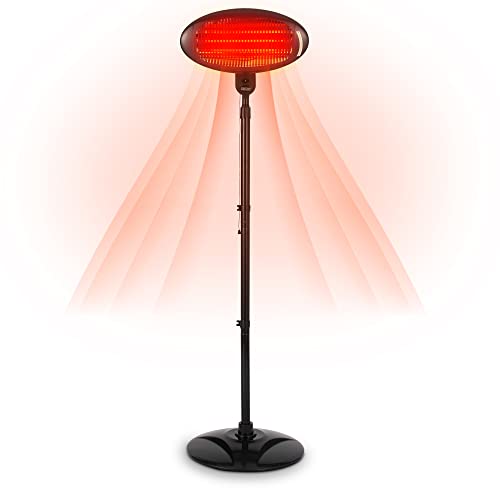How to Choose a Patio Heat Lamp Electric
There are many options available when you want to heat your patio. Electric heaters are much more convenient than propane models that require fuel refills. They can be heated in a matter of minutes by pressing a button or flicking the switch.
They also don't emit gasses that might be harmful to health. Some units have adjustable heat settings to accommodate varying distances.
Heater Type
With the appropriate patio heater, you can comfortably relax in your outdoor living spaces well into the night, and throughout the seasons. There are a variety of patio heaters, including freestanding propane and natural gas models as in addition to ceiling or wall-mounted electric radiant heaters. The choice you make will depend on the size of your space, the power sources available, and your personal preferences.

Most patio heaters are powered by electricity or liquid or natural gas and emit heat via convection and radiant heating. Their heat output is measured in watts, and can be converted to British thermal units (BTUs) to compare. Some models have adjustable heating settings for greater flexibility.
Patio heat lamps combine an electric burner on a pole, and an aperforated screen that reflects flames and radiates heat downwards to warm objects, people and furniture. Some outdoor heat lamps have reflective reflectors that sit on top of the burner that can be silvered in order to reduce the amount that heat is lost upwards.
modern electric patio heater of patio heater is a gas patio heater, is often seen in outdoor areas of bars and restaurants because they generate lots of heat quickly and spread it evenly across all directions, making them ideal to heat tables. These patio heaters are portable and run on a propane tank or be plumbed in to your natural gas line. This is more convenient and comes with lower initial costs, but requires fuel.
Gas patio heaters are becoming increasingly popular as more houses have natural gas lines. They are easy to install, however they require a gas line that is properly installed and working to ensure safety. There are portable natural gas heaters with extension hoses that assist in overcoming this limitation, but they can create a tripping hazard and also a fire hazard when not being used.
Safety
Electric patio heaters are safe to use in covered areas, as they permit heat to radiate upwards and not outward. They are not intended to be used on an unprotected roof. The heater should be placed at a minimum of 6" away from the ceiling and 18" away from the wall adjacent to avoid fire hazards.
Patio heaters made of propane and gas are usually safe to install in enclosed areas and are protected by the proper cover made for outdoor use. These types of covers are typically made of fire-retardant canvas and have a roof that can be closed. These types of patio heaters are prone to safety concerns relating to the fumes and flames they produce. They should be located away from flammable objects like chairs and curtains.
When installing a patio heat lamp electric or any other type of patio heater, be sure to follow the manufacturer's directions and safety precautions carefully. Select a heater that has been awarded UL and CSA safety certifications. Also, be sure to read the user's instruction manual thoroughly. Be extra careful when it comes to pets and children, and make sure the heater is not near them when it's operating. Some patio heaters that are freestanding, such as EUROM, have a built-in tipping protection that shuts down the heater if it is tipped over.
If your patio heater runs on a natural gas line it is essential to inspect the condition of the line periodically and to be tested for leaks by a certified professional. If the line has to be replaced, make sure to hire an authorized plumber. A professional can determine if the line is properly routed or if it should be routed through an underground pipe. Additionally, a professional can also ensure that the heater in the patio is plugged into an outlet that's GFCI (ground fault circuit interrupter) certified to guard against electrical fires and shocks.
Installation
The the height at which a patio heater is placed affects the amount of heat it can radiate into the area. It is essential that the heater is placed at a safe distance from surfaces such as plastic, which can deform as well as wood, which may get too hot. Depending on the heater model you can decide to mount it on a wall or a structure using traditional mounting brackets. Certain models come with a soft starter that lowers the current at the highest level to safeguard your circuits.
